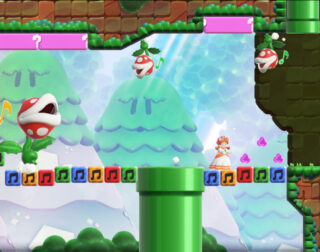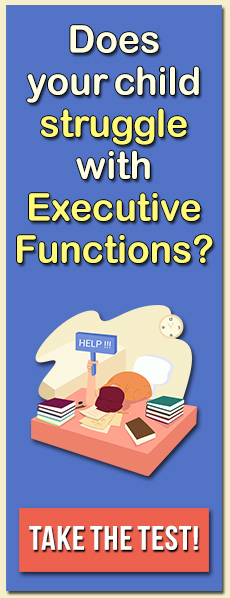Wouldn’t it be great if we could cure ADHD with a video game or an app? If we could prescribe an activity, board game, or physical exercise for the treatment of ADHD?
ADHD is a complex disorder. Estimates are that there could be as many as 250,000 variations of ADHD based upon the symptoms checklist from the DSM-V. So how could any one activity, exercise, or game eliminate the symptoms of ADHD?
There is a substantial amount of research that suggests that though there is no known cure, we can use these types of tools to help kids with ADHD. There are many innovative technologies to treat ADHD when it is viewed as a disorder of executive functions (as understood by researchers such as Russell Barkley and Thomas Brown). Treatment of ADHD through this view can focus on reducing symptoms or developing compensatory skills, rather than on curing the disorder. Leading the way in this field are not new medications that change brain chemistry, but technologies that enhance brain functionality. These innovative technologies to treat ADHD do so by improving working memory, increasing self-regulation, and targeting the brain’s prefrontal cortex to strengthen executive functions.
Traditionalists are skeptical about the idea that a video game, app, technology, or other activity can help kids with ADHD. But what’s so unbelievable? Consider how physical therapy can help people with specific ailments, meditation can improve the symptoms of anxiety, and reading programs such as Orton Gillingham and Wilson can help with dyslexia. While the science demonstrating how video games, apps, and technology can improve ADHD is in its infancy, there is already robust evidence that these tools work. Rather than wait years for double-blind studies to be completed, we need to continue to try new technologies to treat symptoms of ADHD. The key thing to remember is that even when these interventions are helpful, they typically address specific aspects of ADHD but are not a cure.
A variety of exciting new technologies and innovations are being employed to help kids with ADHD. Some, like the program here at LearningWorks for Kids, use games and technologies as teaching tools and and support for weak executive functioning skills. We here at LW4K use technology for engagement and practice of skills, but believe that they are only truly effective when parent and teacher mediators facilitate the generalization of game-based learning into real-world skills. Many of the newest innovative technologies use the attention-getting nature of technology for the direct training of skills to help kids with ADHD and other learning issues. While these technologies are not a cure-all for ADHD (no one treatment is), they can be very powerful interventions to help kids with attention and learning problems when used in conjunction with other supportive therapies and psycho-educational tools.
The following innovative technologies are designed to help kids with ADHD. Each has its own benefits, targeting particular symptoms and difficulties common to kids and adults with ADHD.
Cogmed Working Memory, one of the earliest technologies (1999) designed to help kids with ADHD, focuses on improving working memory deficits, a core concern for kids with ADHD. There are three different age-based versions of Cogmed Working Memory Training. Cogmed RM (for school-aged children) consists of 25 computerized training sessions, each 30-45 minutes long. These training sessions involve a variety of game-like working memory tasks that are fun and engaging. The training is lead by a qualified Cogmed coach such as a psychologist, physician, or trained clinician who organizes the training and provides feedback and progress. Cogmed has been demonstrated to produce actual brain changes through its video game-like format. Similar to many of the innovative strategies that are described below, Cogmed was based upon a foundation of strong research. While Cogmed does not tout itself as a cure for ADHD, it is a promising intervention to help kids with some of the symptoms of ADHD.
Mighteor is a bioresponsive game that uses a heart rate monitor placed on a child’s arm to measure emotional control. Research conducted at Boston Children’s Hospital describes dramatic improvement in emotional control, self-regulation, and the capacity to handle frustration. Mighteor has also been demonstrated to lower parental stress and decrease oppositional behavior. Developed by Neuromotion Labs, the engaging games that come with Mighteor require that a child learn to lower his heart rate below a threshold set specifically for him in order to play the games. Keeping calm by lowering one’s heart rate helps children to develop an awareness of their mind/body connection. Mighteor comes with a tablet, heart rate monitor, and a variety of games and will be introducing new games each month to keep kids engaged.
Project Evo, which is being developed by Boston-based Akili Interactive Labs, is described as a medical device built to appear like an action video game. A pilot study of kids who played Project Evo for 9 hours over the course of 4 weeks indicates that playing Project: EVO improved attention, working memory, and inhibitory control, 3 of the major areas used to diagnose and assess ADHD. Participants also demonstrated improvement in their reaction times and the variability of their responsiveness, subtle but key measures of attention and the capacity for response inhibition. The most recent research indicates that 32% of the kids initially diagnosed with ADHD moved into the “neurotypical” (average, non-ADHD) range on neuropsychological measures of ADHD following this play. Akili is seeking FDA approval of Project Evo as a treatment for ADHD. The developers of Project Evo clearly state that they do not see it as the frontline treatment for ADHD. Instead, they recognize the variability of symptoms in kids with ADHD and see Project Evo as addressing specific skill sets that can help kids with ADHD.
I strongly encourage parents of kids with ADHD to check out these innovative technologies, which could engage your child, provide a non-medication strategy to reduce the symptoms of ADHD, and support the development of other skills that could help your child at school and with his peers.
Featured image: Flickr user Chris_Parfitt





